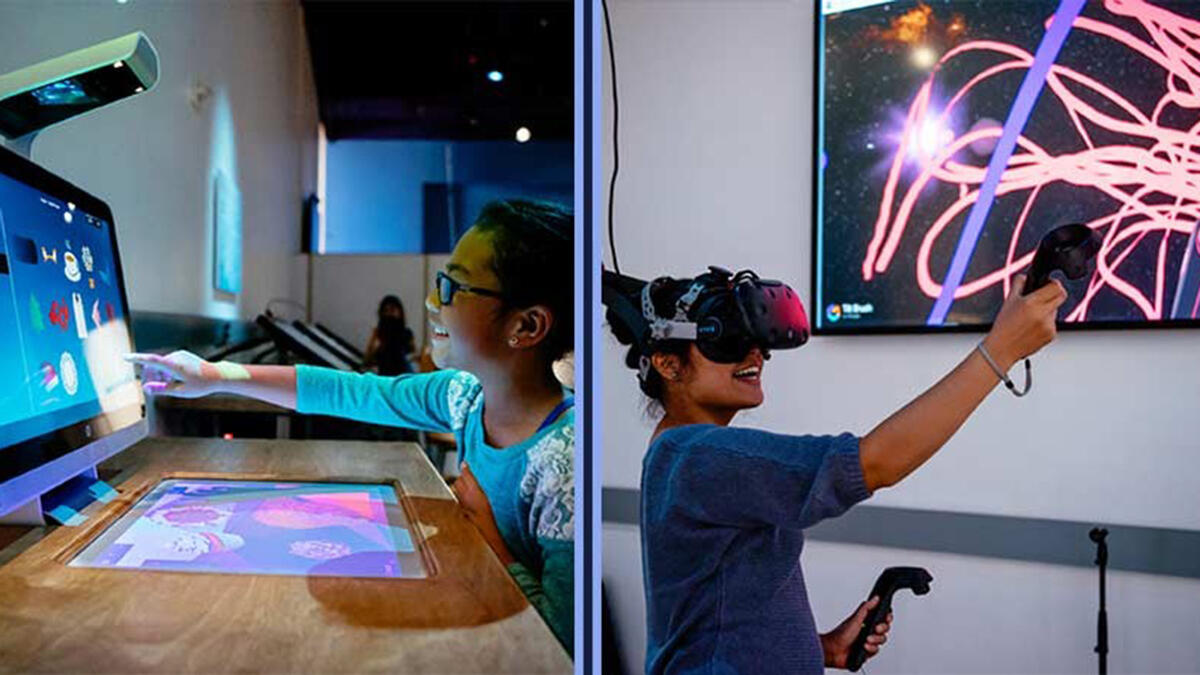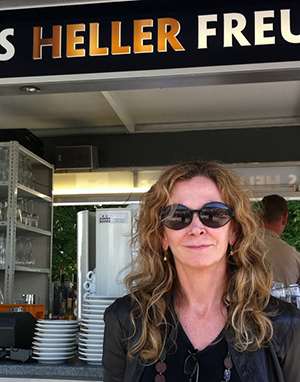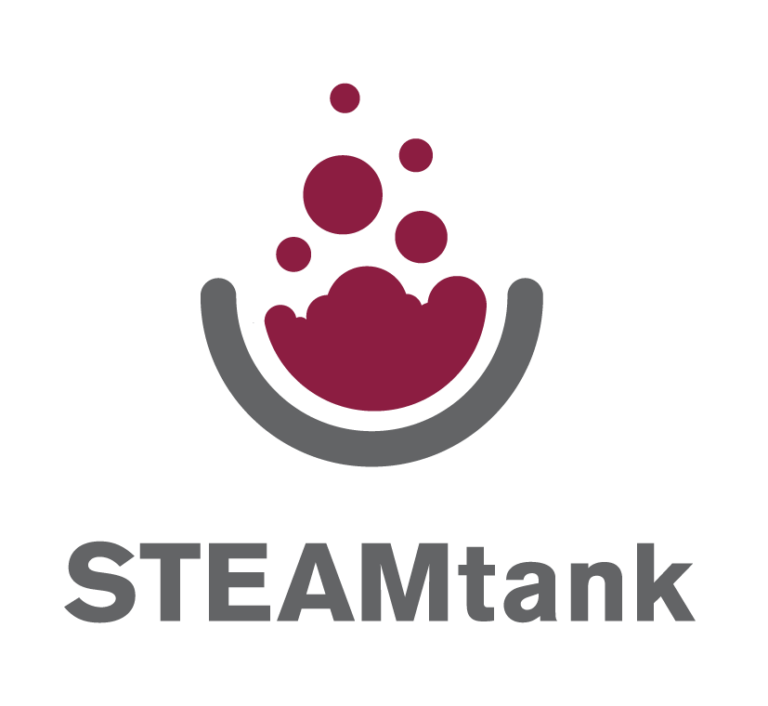InnovationSpace builds cross-disciplinary connections that fuel creative collaborations

Specialization has long been one of the primary allures of a college education. A student can concentrate on a singular area of study to acquire sufficient training to land a good job and get on the path to a career.
With such a narrow focus, a math major and a marketing major might take a course or two together. But they would likely have little opportunity to engage in collaborative learning experiences in which they share knowledge and combine skills in ways that generate insights and expand their expertise.
Arizona State University has been taking steps to break down the silos that separate students by their academic disciplines, and instead foster educational interactions that enable students to benefit from subject matter taught in a variety of degree programs.
InnovationSpace is among the ASU endeavors at the forefront of birthing these productive cross-disciplinary connections. The program brings students together to take on challenges and seek solutions not simply as schoolwork assignments but in partnership with corporations, community organizations and university researchers.
Students spend one or two semesters developing project concepts that must respond to demands of the marketplace but also prioritize societal well-being, minimize detrimental environmental impacts and promote sustainable technologies and practices.
Student teams developed the identity, marketing strategies, exhibit designs and engineering of the program artwork and the museum’s name, Steamtank, a play on think tank.
These tasks “are real-world projects because they deal with meaningful real-world problems and needs, and like in the real world the students may be working with people who don’t always think like they do,” said Cheryl Heller, InnovationSpace director as well as the director of design integration at ASU and a professor of practice in innovation design.
Heller helps guide students through their pursuits in InnovationSpace, a partnership of ASU’s Ira A. Fulton Schools of Engineering, the Design School in the Herberger Institute for Design and the Arts, the W. P. Carey School of Business and the Global Institute of Sustainability and Innovation.
She works with Nyasha Stone Sheppard, InnovationSpace program manager, to oversee student projects, which have ranged from improving waste recycling systems and health care system operations to designing hotels that fully meet the needs of people with disabilities and programs that support young people who age out of foster care systems. Other InnovationSpace student projects have helped major corporations such as Procter & Gamble, Johnson & Johnson and the Clorox Company develop more sustainable products and product packaging.
“Our projects contribute to students’ resumes,” Heller said. “They are going to be able to say, for instance, that they did work for one of the biggest consumer packaging companies in the world. It’s so rare that college students can say that they were part of a transdisciplinary team working for actual business clients. So, that’s priceless experience. That’s what InnovationSpace is here to do.”
Heller and Sheppard point out that the program has also become a springboard for student capstone design projects, as well as honors thesis and master’s thesis projects.
Equipping students with skills that match job market demands
The program gives students a platform for developing impactful projects, said Anthony Kuhn, a Fulton Schools lecturer and also one of the primary InnovationSpace faculty members.
“It gives our students a resource for getting input from faculty and other students in different areas of engineering and areas outside of engineering. That broadens their perspective and helps them design solutions that contain unique elements that can be applied to current industry problems,” Kuhn said.
“This also helps them build skills other than their engineering skills that are going to make them more marketable to employers,” he added.

InnovationSpace Director Cheryl Heller is expanding opportunities for Arizona State University students to collaborate with businesses on projects that will provide experiences to prepare the students for the technological, economic and market challenges faced by industry.
The students’ ambitious projects show how the program is helping produce ASU graduates equipped to innovate in multiple ways that will benefit a wide range of industries and society in general.
For her capstone project, industrial engineering student Anna Frida Kaellgren is teaming with mechanical engineering undergraduate Neal Sullivan and Raphael Rios, a student in the innovation and venture development master’s degree program — a degree program inspired by InnovationSpace — to design material recovery facilities that would boost the capabilities of plastics recycling operations.
These advanced facilities would overcome many of the current technological, economic and logistical hurdles to achieving fully efficient and sustainable recycling of plastics.
Kaellgren and her collaborators are coordinating their efforts with the mission of the Sustainability Consortium, a global organization working to improve the sustainability of consumer products by partnering with product manufacturers, retailers, social organizations, governmental agencies and university academics and researchers.
“We are learning how to create a business plan, communicate our ideas and present them to our project sponsors,” Kaellgren said. “And through the consortium we’re seeing that a lot of companies are interested in what we are doing.”
A similar recycling project has brought Kaellgren together with industrial engineering students Hassan Alnasser and Daniel Scott, chemistry student Nadya Soekardono and Tyler Eglen, a graduate student in the Global Technology and Development program in ASU’s School for the Future of Innovation in Society within the College of Global Futures.
Eglen said the project provides a good example of the kinds of complicated “wicked problems” InnovationSpace is finding to challenge students.
InnovationSpace projects “don’t give you problems you can solve with an equation. It’s not standard curriculum. There’s no preset formula for success or a road map you can follow to get an “A” in the course,” Eglen said.
“That is what I think is the strength of this program. It can be frustrating, but it’s what is going to prepare you for the messy nature of how problem solving often works out in the real world.”
STEAM museum endeavor reflects big ambitions

Abigail Peters, Fulton Schools engineering management graduate and currently a student in the Master of Science Innovation and Venture Development program, visited attractions such as the Smithsonian Institution’s National Museum of Natural History to prepare for her work on an InnovationSpace project to develop a STEAM museum on Arizona State University’s Tempe campus designed for young students.
The far-reaching aspirations of some projects are what motivate many students. That’s the case for Abigail Peters and a growing group of fellow students involved in an InnovationSpace-driven venture to develop a science, technology, engineering, arts and math, or STEAM, museum on ASU’s Tempe campus.
Peters is helping to manage the work of more than 20 ASU students enrolled in several degree programs to move through the concept, design, construction and business operations phases of creating the interactive facility intended to help elementary school and junior high school students experience the vivacity of today’s STEAM environments.
She says the multifaceted effort demands tapping into just about everything she learned in her undergraduate studies in engineering management at ASU and now as a graduate student in the innovation and venture development program.
Beyond getting the museum up and running, Peters said she, Heller and others are already talking about what the museum will be able to do to serve a larger purpose for its target audience.
They would like to see the enterprise contribute to breaking socioeconomic, gender and racial boundaries that have limited access to STEAM education opportunities.
“We hope to provide learning opportunities that increase the possibility for all young people to pursue careers in STEAM fields,” Peters said.

InnovationSpace Program Manager Nyasha Stone Sheppard is on the staff of the Design School in the Herberger School for Design and the Arts and has a role in the J. Orin Edson Entrepreneurship and Innovation Institute.
Jared Sanowski, who will soon complete studies for an engineering management degree, finds the project invigorating.
“I really like working in groups of diverse people, and we have a large group with people in all different kinds of majors,” he said, noting the opportunities to work with a museum studies major and education majors and adding that he finds the collaborative environment fosters “a very entrepreneurial mindset.”
Sanowski likes how the project will showcase active nontraditional learning.
“Instead of this being a museum where you just read information about exhibits, this is geared toward engaging in a hands-on way with the things in the museum,” he said.
That core aspect of the endeavor should appeal to young students and perhaps ignite interest in STEM studies once they experience the excitement of creative explorations with their friends and peers, Sanowski said.
The museum project is another bright reflection of the way InnovationSpace has become a growing force in expanding opportunities for ASU students to learn by doing, says Dan McCarville, a professor of practice in engineering management in the School of Computing, informatics, and Decision Systems Engineering, one of the six Fulton Schools.
McCarville encouraged and supported Peters in doing the groundwork to formulate a vision for the STEAM museum. That included a cross-country trip to meet Erin Jablonski, a professor of chemical engineering at Bucknell University who co-founded the first capstone project-driven STEAM museum, located near the university in Pennsylvania.
“This is the kind of grassroots project that InnovationSpace is generating to advance our students’ competencies,” McCarville said. “Especially for students in our capstone design courses, it’s giving them meaningful work that goes beyond simply designing a new widget and instead involves things that encompasses the essential elements involved in real business and technological challenges.”
Read an expanded version of this article on the Ira A. Fulton Schools of Engineering website.
Top image: Photos from an interactive virtual reality exhibit at The Tech Interactive science and technology center in San Jose, California, show the types of hands-on experiences being developed for a planned science, technology, engineering, arts and math, or STEAM, museum on Arizona State University’s Tempe campus. The education-oriented facility geared for elementary and junior high school students is a project of ASUs InnovationSpace program. Photo from The Silicon Review
More Science and technology

ASU postdoctoral researcher leads initiative to support graduate student mental health
Olivia Davis had firsthand experience with anxiety and OCD before she entered grad school. Then, during the pandemic and as a result of the growing pressures of the graduate school environment, she…

ASU graduate student researching interplay between family dynamics, ADHD
The symptoms of attention deficit hyperactivity disorder (ADHD) — which include daydreaming, making careless mistakes or taking risks, having a hard time resisting temptation, difficulty getting…

Will this antibiotic work? ASU scientists develop rapid bacterial tests
Bacteria multiply at an astonishing rate, sometimes doubling in number in under four minutes. Imagine a doctor faced with a patient showing severe signs of infection. As they sift through test…
